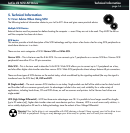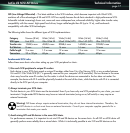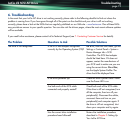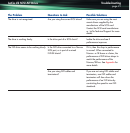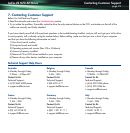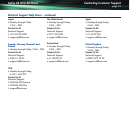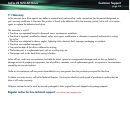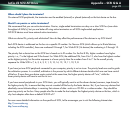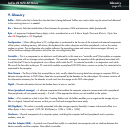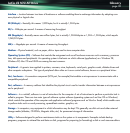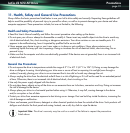
Appendix - SCSI Q & A
page 27
LaCie d2 SCSI AIT Drive
Can I mix Single-ended (SE) devices and Low-Voltage Differential (LVD) devices on the same SCSI chain?
This is possible, because LVD devices are backwards compatible, meaning they can be used with SE buses. The LVD devices
will simply be reduced to the maximum speed and cable length limitations of the SE bus.
For example, if you connect an Ultra2 (LVD) Wide hard drive (with a theoretical maximum throughput of 80MB/s and
maximum cable length of 12 m) to an Ultra Wide (SE) bus (whose theoretical maximum throughput is 40MB/s and maximum
cable length 1.5 m), the Ultra2 hard drive will operate in Ultra Wide mode (at a maximum of 40MB/s, with a maximum
cable length of 1.5 m). Therefore, the LVD device will not be used to its full potential.
To add a SE peripheral to an LVD bus and preserve the data throughput and cable length of LVD, you can use a SCSI
expander called an LVD to SE converter. This converter divides the SCSI domain into two bus segments – one segment will
operate at the LVD data throughput and cable length and the other bus segment will operate at the single-ended data
throughput and cable length.
What issues are involved when connecting a device using a more recent SCSI protocol (for example Ultra3) to an
older host adapter (for example, Ultra2)?
In general, when new SCSI protocols are designed they feature backwards compatibility, meaning that they are compatible
with most of the previous protocols. This case is no exception. An Ultra3 drive attached to an Ultra2 host adapter will simply
operate in Ultra2 LVD mode, with the reduced transfer rates of Ultra2. If you connect that same Ultra3 drive to an even older
host adapter (SCSI-2, for example), it will simply operate in the fastest mode the older adapter is capable of handling
(Fast-10 SE mode in the case of a SCSI host adapter) with the cable length limitations of the older host adapter. Essentially,
the host adapter and drive will negotiate for the best speed that they both have in common.
What is termination?
SCSI passes signals between devices over SCSI cables that act as transmission lines. The transmitting device, the cabling and
the receiving device must all be impedance matched in order to accomplish maximum transfer of energy (signals) from end to
end. If not, upon encountering a change of impedance, part of the signal will be reflected back to the transmitting device. If
those reflected signals arrive at the transmitter after it has switched to the receive mode, it will think the reflected signal is the
signal it is looking for. Not recognizing the reflected signals will cause that device to issue a SCSI re-send or perhaps even
shut down the bus.
Termination (or terminators) is used to provide a better impedance match, reducing these reflections to a minimum. Many
Single-ended SCSI devices feature internal termination that works by means of an on/off switch at the back of the peripheral.
Other SE devices may require an external terminator. LVD peripherals always require external termination. Contact your
computer supply specialist for advice on which type of terminator to use.



